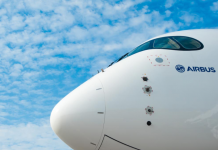A look at the work of the European Commission’s department on mobility and transport, including efforts to secure a more sustainable future for international aviation
Henrik Hololei has been the European Commission’s Director-General for Mobility and Transport since October 2015, working with Commissioner Adina Valean.
The Department is responsible for EU policy on all aspects of mobility and transport, including air, road, rail, maritime and inland waterways. This covers everything from an aviation strategy for Europe, unmanned aircraft systems, airports and the environment to road safety, haulage, rail infrastructure, ports and international shipping.
A common thread that runs through the department’s work is ensuring that all forms of transport can make drastic reductions in pollution.
Aviation and the environment
In 2007, the signing of the EU-US Air Transport Agreement represented a landmark in relations between what are the two largest aviation markets in the world.
The “open skies” agreement allows any airline of the European Union and any airline of the United States to fly between any point in the EU and any point in the U.S.
It provides a framework for cooperation designed to tackle the challenges of the environment/climate, safety, security and competition policy.
In 2010, a protocol was signed to amend the initial agreement to improve market access and regulatory cooperation. The following year, Norway and Iceland joined the agreement and fully integrated into the single European aviation market.
Some 65 million passengers flew between the EU and the U.S. in 2018. There was a 38% increase in traffic since the recession of 2009.
This may be positive in terms of competition but it presents an obvious challenge for climate policy. Aviation is one of the fastest-growing sources of greenhouse gas emissions; indeed, according to the EU, if global aviation were a country, it would rank as the 10th biggest emitter.
In July, the EU published a series of proposals for how it intends to achieve climate neutrality by 2050, including an intermediate target of an at least 55% net reduction in greenhouse gas emissions by 2030.
While aviation has made progress in fuel efficiency – seeing a 24% reduction in fuel burned per passenger between 2005 and 2017 – these benefits have been outpaced by the sustained growth in air traffic.
In 2017, direct emissions from aviation accounted for 3.8% of total CO2 emissions and 13.9% of emissions from transport, making it the second-largest source behind road transport.
The European Green Deal sets a goal of reducing transport emissions by 90% by 2050 (compared with 1990). The aviation sector will have a big part to play.
Offsetting CO2 emissions
Since 2016, the EU has been supporting the efforts of the International Civil Aviation Organisation (ICAO) in designing a global scheme for offsetting CO2 emissions from international aviation.
The Carbon Offsetting and Reduction Scheme for International Aviation, or CORSIA, aims to stabilise CO2 emissions at 2020 levels by requiring airlines to monitor emissions on all international routes and offset emissions from routes included in the scheme by purchasing eligible emission units generated by projects that reduce emissions in other sectors, such as renewable energy.
Based on expected participation, the scheme is estimated to offset around 80% of the emissions above 2020 levels between 2021 and 2035.
While work is continuing to develop rules and tools to make the scheme operational, CORSIA will ultimately depend on the development and enforcement of national measures.
References
- https://ec.europa.eu/clima/policies/transport/aviation_en
- https://ec.europa.eu/transport/sites/default/files/2017-eu-us-air-transport-agreement-factsheet.pdf
- https://ec.europa.eu/info/persons/director-general-henrik-hololei_en
- https://ec.europa.eu/info/departments/mobility-and-transport_en
- https://ec.europa.eu/commission/commissioners/2019-2024/valean_en#team
- https://ec.europa.eu/commission/commissioners/2019-2024/valean_en#news
Further Reading
Editor's Recommended Articles
-
Must Read >> How can the aviation industry cut emissions?
-
Must Read >> Smart and sustainable mobility for the future
-
Must Read >> Airbus: On the path to sustainable air travel
















